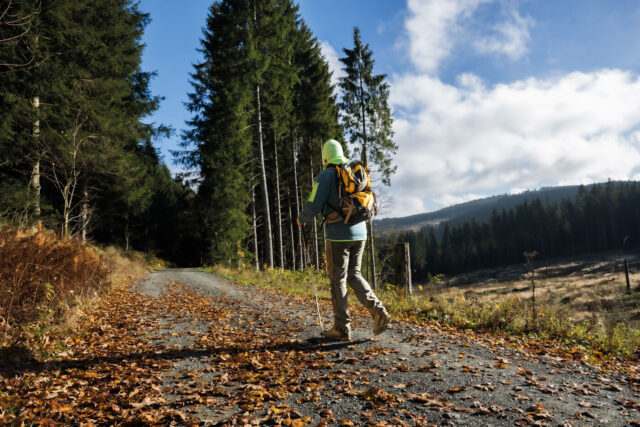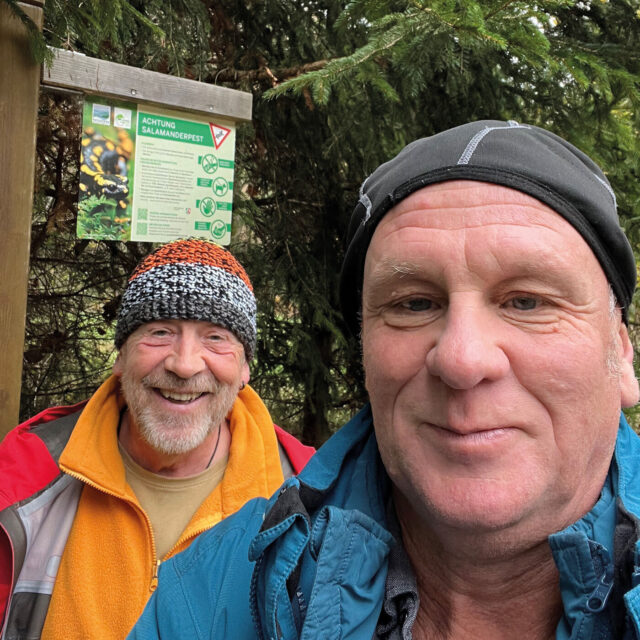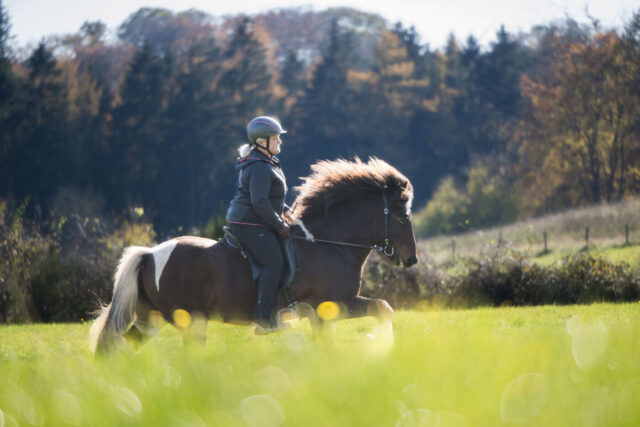Landessportbund NRW
Theo Düttmann, Michael Stephan
The call of nature: outdoor sports

Photo: LSB NRW | Bowinkelmann
Leave everyday life behind and get in direct contact with mud or snow, wind or waves, rain or sun. All sports physicians unanimously emphasize the positive effects of “outdoor sports.” And the social aspect is now also being explored. The German Sport University Cologne has a chair for outdoor sports and the environment. Here are a few examples of outdoor sports:

Mountaineer Peter Kramer (left) from Winterberg and author Theo Düttmann
Photo: LSB NRW | Theo Düttmann
If you want to understand outdoor sports, you should head to Markstraße in Winterberg. Peter Kramer welcomes you in an orange “Great Outdoors” sweatshirt embroidered with an emblem of Mont Blanc. In the background are snow-covered mountains, and in the foreground, wild animals on a green meadow.
In the stairwell, visitors are greeted by a photo of Peter on Mount Kilimanjaro. The cold, the thin air, the light in the high mountains… everything is physically palpable when you look at it. As are the limits of human physical and mental capabilities. This contrast: nature in all its majesty and power on the one hand. And humans on the other, at altitudes that are death zones. “I had to turn back at 8,450 meters during the ascent, 398 meters short of the summit. But the summit is not the goal, it's getting back down safely,” says the 60-year-old.
As contradictory as it may sound, philosophically speaking, humans and nature cannot be separated, according to one of the most important thinkers of our time: “The idea that we can go into nature, or stand outside it, as if we were not part of it, comes from modern science and its desire to control nature,” says American author Siri Huvstedt. “Natural disasters and new threats to the planet were the result.”
“I had to turn back at 8,450 meters during the ascent, 398 meters short of the summit. But the summit is not the goal, it's getting back down safely.”
Peter Kramer
Staying at home is not a solution either
Peter Kramer underscores these statements. He observes it right outside his front door. Despite all his travels to faraway places, he has remained loyal to his winter mountain, which rises 800 meters above sea level, and to his club, the Winterberg Ski Club. He is well aware of the contradictions of winter sports. On the one hand, in times of climate crisis, the slopes are made ready for use with artificial snow produced from renewable energies. On the other hand, the athletes generate so much CO2 when they travel to the resort that any conservationist would think: The many tourists from Holland should stay at home and go cross-country skiing on rollers in the dunes. “But the absence of visitors would have devastating consequences for our economy,” he realizes.
Peter finds what reconciles him just a short walk away from the hustle and bustle of the arena, in a valley. Pure nature. No sounds except birds chirping, trees swaying in the wind, pattering rain, fragrant spruce trees, and the murmur of a stream. Occasionally a jogger comes by, but otherwise there is no one else around. He mentions that he is noticing fewer and fewer insects on his walks, that the salamanders have disappeared due to a plague, and that the bark beetles have done a thorough job. But his valley remains his valley – even if it is changing. “And I won't tell you its name, otherwise we'll soon have Instagrammers here looking for the best photo …”

Photo: LSB NRW | Bowinkelmann
Further information on the topic of sport, the environment, and nature can be found at: www.lsb.nrw
“Knödel” has the found peace
Change of scene. Eifel National Park: The hooves of the Icelandic gelding, whose real name is Randver vom Resterberg, plow through the leaves in a steady rhythm. He jumps around, surrounded by Polly the dog, who is begging his rider for a treat. “I grew up with animals,” laughs Irene Hansen-Schmitz, “with goats, rabbits, and donkeys.” She regularly roams the surrounding forests of her home village of Nettersheim-Engelau in the Eifel region with her horse Knödel. “I have a close connection with animals. I can leave everything behind me and don't need a vacation,” she says. Nothing escapes her watchful eyes, be it a beetle on the path or a deer at the edge of the forest.
She takes everything in. As a biological-technical assistant and daughter of an organic farmer, she is all too aware of the impact humans have on the environment: “When I see a field being overfertilized with manure, it hurts.” Nature conservation is close to her heart. “As chairwoman of the Nordeifel Icelandic Horse Riding Club, I really appreciate that our riders learn rules for how to behave in nature. I don't ride across forests and meadows either.”
































